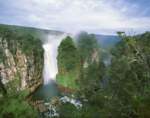This article lists the sites registered with World Heritage in Bolivia.
Understand
Listing
| Site | Type | Criterion | Description | Drawing | |||||||||||||||||||||
|---|---|---|---|---|---|---|---|---|---|---|---|---|---|---|---|---|---|---|---|---|---|---|---|---|---|
| Samaipata Fort (Florida province in Tropical plains) | Cultural | (ii) (iii) | | ||||||||||||||||||||||
| Jesuit Missions of Chiquitos (province of Chiquitos in the Tropical plains) | Cultural | (iv) (v) | | ||||||||||||||||||||||
| Qhapaq Ñan, Andean road network crosses 6 countries: Colombia, Ecuador, Peru, Bolivia, Chile and Argentina. | Cultural | (ii) (iii) (iv) (vi) | This large network of communication, trade and defense routes covers more than 30,000 km. Built by the Incas over several centuries and partly based on a pre-Inca infrastructure, this extraordinary network crossing one of the most difficult geographical terrains in the world connects the snow-capped peaks of the Andes (at more than 6,000 m) to the coast passing through by tropical rainforests, fertile valleys and deserts. The Qhapac Ñan which reached its maximum extension in the XVe century spanned the length and breadth of the Andes. The property comprises 273 individual sites spanning over 6,000 km. They were chosen to illustrate the architectural, technical, political, social achievements of the network as well as its associated infrastructure, intended for trade, accommodation and storage of goods, and sites of religious importance. |  | |||||||||||||||||||||
| 1 Tiwanaku: spiritual and political center of tiwanaku culture | Cultural | (iii) (iv) | The city of Tiwanaku was the capital of a powerful pre-Hispanic empire which extended its influence over a vast area of the southern Andes and beyond, and reached its peak between 500 and 900 CE. The remains of its monuments bear witness to the cultural and political importance of this civilization, which stands out clearly from the other pre-Hispanic empires of the Americas. |  | |||||||||||||||||||||
| 2 City of Potosí | Cultural | (ii) (iv) (vi) | The place was considered in the XVIe century as the largest industrial complex in the world. The extraction of silver ore was carried out by a series of water mills. The current ensemble includes the industrial monuments of Cerro Rico, where water is brought by a complicated system of aqueducts and artificial lakes, the colonial town with the Casa de la Moneda, the Church of San Lorenzo, noble residences and the “barrios mitayos” which were the working-class districts. |  | |||||||||||||||||||||
| 3 Historic town of Sucre | Cultural | (iv) | First capital of Bolivia, Sucre was founded by the Spaniards in the first half of the XVIe century. It has many religious buildings such as San Lazaro, San Francisco and Santo Domingo which offer a well-preserved image of the architectural alliance of local traditions with styles imported from Europe. |  | |||||||||||||||||||||
| 4 Noel Kempff Mercado National Park (Velasco and Iténez provinces in the Tropical plains) | Natural | (ix) (x) | This national park is one of the largest (1,523,000 ha) and the most intact of the Amazon basin. Varying in altitude from 200 m to nearly 1,000 m, it offers a rich mosaic of habitats ranging from high altitude Amazonian evergreen forests to savannah and Cerrado forest. The park has an evolutionary history spanning over a billion years since the Precambrian. It is home to viable populations of many large vertebrates at risk or threatened with global extinction, a flora estimated at 4000 species and more than 600 species of birds. |  | |||||||||||||||||||||
Criteria legend
| |||||||||||||||||||||||||
